There are lot of things you want to know about rearing cattle. This post includes almost all the facts you need to know about the cattle farming. Including the purpose of rearing cattle, breeds, diseases and etc.
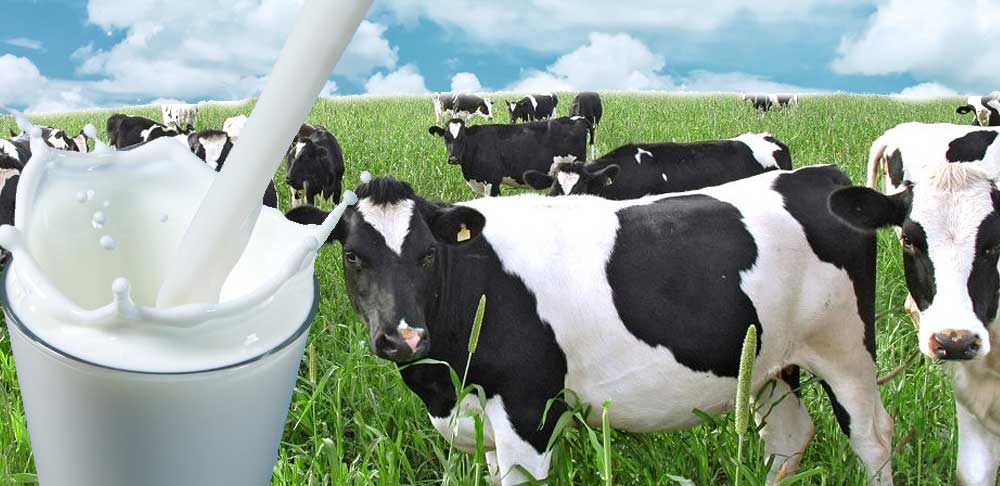
Cattle farming (cow farming)
Cattle Farming– simply it is the rearing of cattle or cows for milk and meat. To meet these outputs very effectively and efficiently we should manage the herd with best management strategies and the practice. Then only you will be able to have a higher productivity and a higher profit too. Therefore, cattle farming is every thing about managing the cattle properly and effectively to meet our demands.
Here is the terminology that you may need when go through this post regarding the Cattle rearing
- Calf – A young dairy animal
- Heifer- A female calf (<30 m old) which has not given birth to a calf
- Cow – A female dairy animal after >30 m old
- Parturition – The process of birthing a calf (calving)
- Bull – A male dairy animal at any stage of life, unless castrated
- Dam – A dairy animal’s mother
- Sire – A dairy animal’s father
.
- Cattle Feed – Roughages
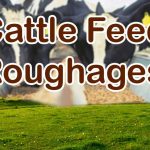 In Agriculture or farming animal farming plays a key role. The animal […]
In Agriculture or farming animal farming plays a key role. The animal […] - Bull Management
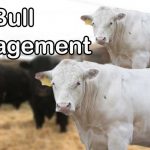 As we all know to have a better milk yield from our […]
As we all know to have a better milk yield from our […] - Cattle Breeding and Heat Detection
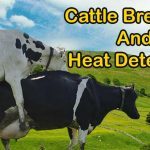 Cattle Breeding can identify as one of the most important management practices […]
Cattle Breeding can identify as one of the most important management practices […] - Cattle Breeding
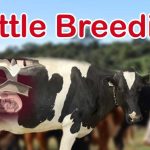 Cattle breeding is one of the most important factors when it comes […]
Cattle breeding is one of the most important factors when it comes […] - How to Manage Pregnant Cows
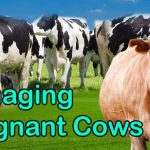 When it comes to cattle rearing properly managing the pregnant cattle (here […]
When it comes to cattle rearing properly managing the pregnant cattle (here […]
“Purposes of rearing cattle”
The cattle we are rearing for the purpose of milk are called Dairy Cattle. And the cattle rearing for meat purpose are Beef Cattle. Depending on your purpose you have to select the best breed and have to follow the suitable management practices too

Dairy Cattle
Dairy cattle are the cattle we use primarily for milk. Normally the lactation period of a dairy cattle is around 305 days. Lactation period means after giving birth to a calf the time period which you can have milk yield. Longer lactation period means higher milk yield. You can get a calf each year and there by you can have milk yield yearly. Here we have to follow necessary techniques to have a better milk yield by increasing the lactation period.
Desired body characteristics to be dairy cattle
There are some body characteristics of a cattle to its to be dairy cattle. Here are some of them:
- They should possess a large capacity for consumption and digestion.
- The body shape should be Angular or Wedge shape.
- They should possess strong bones and the legs should be evenly placed.
- The udder should be large, a well balanced one and it should attach tightly to the body.
- In addition, there should be a well-developed mammary glands/system.
If cattle possess the above characteristics then you can have a better milk yield from these dairy cattle. This sector is more famous in the world. Because there are so many value-added products like cheese, yoghurt, ice cream etc. produced using cow milk. As well the cow milk is rich with vitamin D and calcium. It is a good food supplement too. The nutritional content of the milk differs from whole milk, skimmed milk to low fat milk.
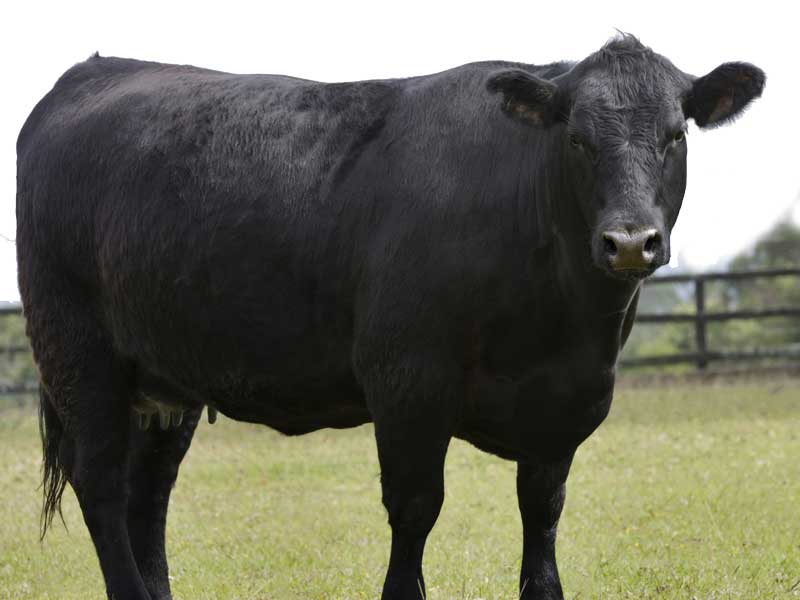
Beef Cattle
These cattle are reared mainly for meat purposes. This category of the cattle should consist of considerable proportion of meat in their body.
The beef is rich with protein, fat, iron and some minerals like vitamin B12, zinc, phosphorous etc.
Desired body characteristics to be beef cattle
Just as the dairy cattle there are some key features of the cattle body to it to be a beef cattle. They are:
- The cattle should be with a Boxy shape or a Barrel shape body.
As well compacted, deep and thick flesh body should be there.
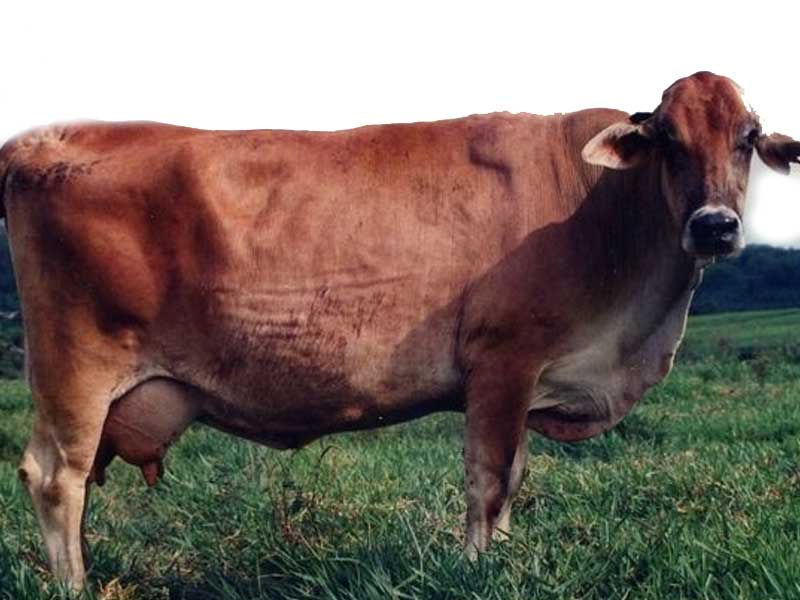
Dual purpose
There are some cattle breed where we can use both for the milk and the meat purposes. These are normally cross bred types.
Desired body characteristics to be dual purpose cattle
This type possesses both the characteristics that dairy cattle and beef cattle possess.
Some of these characteristics are:
- They have a less compact and a flesh body than the beef cattle.
- Their udder development is superior than the beef type and inferior than the dairy type.
Livestock Management
Managing livestock or simply called animal husbandry is a very popular sector in the Agriculture. The livestock products like milk and meat aids to meet greater proportion of our daily protein supply bundled with other essential nutrition elements. The products of animals are really an excellent source of nutrients. Worldwide many livestock are managing for milk and meat. Of them cattle, buffaloes, goats, sheep are more prominent. Through this post we are going to discuss some of the key points regarding the Cattle Farming.
“Breeds of cattle”
There are more than 800 cattle breeds recognized so far. They are categorized in to two main species. They are:
Bos taurus – the species adopted to cooler climates. Normally called temperate or European breeds.Bos indicus – the Indian or the humped species. They are adopted to hot climate
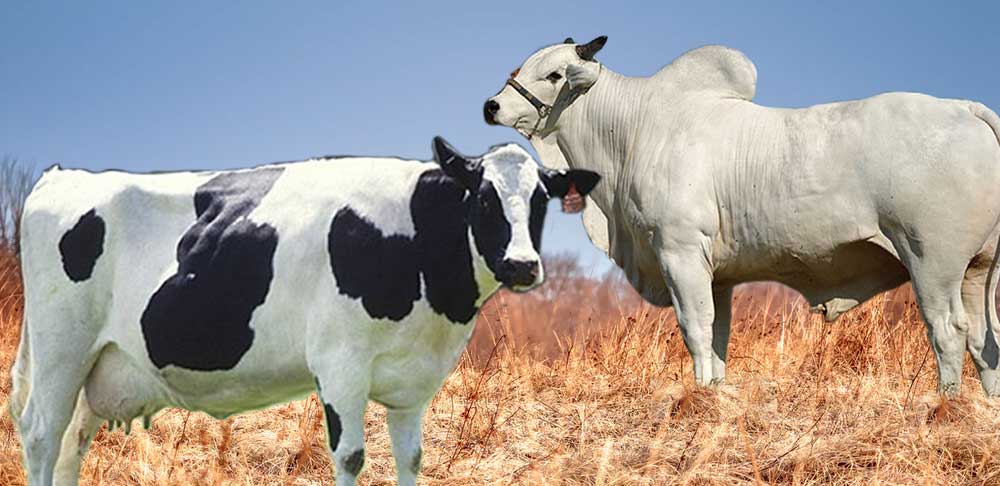
The below are some differences between the two species.
| Bos taurus | Bos indicus |
| Possess lesser number of sweat glands | Higher number of sweat glands |
| Hump is not well developed | Hump is well developed |
| No dewlap | Prominent dewlap is there |
| Tight skin | Loose and flexible skin |
| Heat tolerance is less | Heat tolerance is high |
| Production is higher | Production is low |
| Tail head is raised | Tail head is closer to body |
| Metabolic rate is high | Metabolic rate is low |
European Breeds (Bos taurus)
Dairy cattle breeds
Holstein-Friesian
- The origin of the breed is Holland.
- The body color is black or white.
- The body is well developed with large feeding capacity
- The udder is well developed and large.
- Gestation period is 280 years
- Average milk yield is 6150 L/305 days
Brown Swiss
- Origin country is Switzerland.
- Body color varies from dark brown to gray.
- Larger in size and have large ears.
- They are hardy.
- Gestation period is 290 days.
- Average milk yield is 5250L/305 days
Jersey
- Body color- dark brown to fawn
- They are smaller in size and have lower body weight.
- Very nervous and sensitive group.
- Gestation period is 280 days.
- Milk yield is 4000L/305 days.
- They possess a greater economy of production.
Ayrshires
- Origin of the breed is Scotland
- Body color varies from reddish brown or reddish brown and white.
- Medium in size and a strong body.
- Gestation period is 278 days.
- Average milk yield is 4840 L/305 days.
- They can adapt to all management systems easily.
Beef cattle breeds
Aberdeen Angus
- Prominent in black color and sometimes red can be seen
- They are resistant to hard weather conditions.
- High beef yield is there.
- Carcass quality is high.
Indian Breeds (Bos indicus)
Sahiwal
- Originated in Panjab, Pakistan
- One of the best dairy breeds in India.
- Very lethargic type.
- Body color varies from various shades of red.
- Massive humps can be seen.
- Loose horns are there.
- Possess a long tail.
Red Sindhi
- Originated in the Karachchi and Hydrabad.
- Spread in many parts of India.
- Deep, rich red color body.
- Males are darker than the females.
- Resistance to heat.
- High milk yield is there.
Cross breeds
There is some popular breed which can be used as dual-purpose cattle breeds. Here are some of them.
Australian Milking Zebu (AMZ)
- To find a solution for heat, ticks and to have higher milk production this breed was developed.
- At first a high producing Jersey cattle is mated with a Sahiwal or a Red Sindhi.
- Then infusion and Friesian blood is done.
- The quality of the milk is very high in here.
- Mature purebred AMZ cows – Produce an average of 2,700 L/ lactation
- AMZ cross Friesian cows average more than above
Australian Friesian Sahiwal (AFS)
- A cross breed of dairy cattle combining Sahiwal and Friesian
- Designed basically for – Tropical regions
- Produce approximately 3000 L of milk / lactation.
General management practices for rearing cattle
The managing practices of the farm should be carrying out according to the standards. Then only you can have a disease free, healthy stand of cows in the farm.
Housing
- The housing of the farm should do in a way which makes it comfortable for the cattle to live. It should be a clean, dry and a comfortable place.
- There should be an enough yard space and should have access to clean water.
- There should be a sufficient feeding space too.
- The housing should be with better shade and ventilation too.
- There are two housing systems. Tie-up housing system and Loose housing system.
Cleanliness, Feeding, Grooming, Leisure, Exercises, Vaccination, Record keeping, Restraining, Casting, Hoof trimming are also some of the major management practices you should carry out to have a better cattle farm.
“Cattle Diseases”
There are some major cattle diseases which you need to know.
Fatty live syndrome
It is a metabolic disorder and in here accumulation of excessive internal fat occurs. Liver gets filled with fat and do not function optimally. This occurs commonly within few days of calving in excessive fat cows. This condition leads to decrease feed intake and production.
Ketosis (acetonemia)
This is also a metabolic disorder. Occurs due to excessive use of body fat for energy. This affects on high producing cows after giving birth to young ones. This condition increases at peak lactation period. This cause to increase the concentration of Fatty Acids and ketones in the blood and urine.
Acidosis
This also a metabolic disorder. This occurs when rumen pH declines mainly due to the feeding of highly fermentable carbohydrates. In here Fibre-digesting bacteria die and lactic acid producing bacteria populations increase